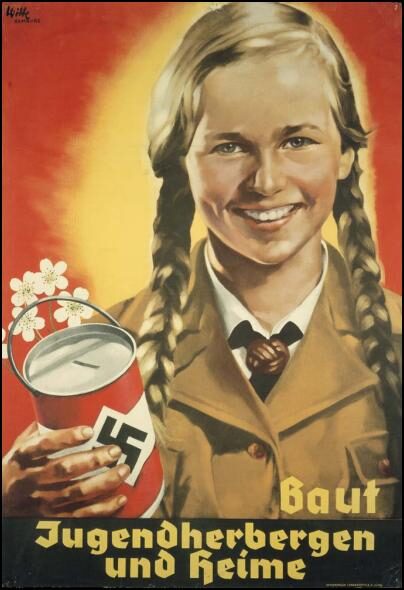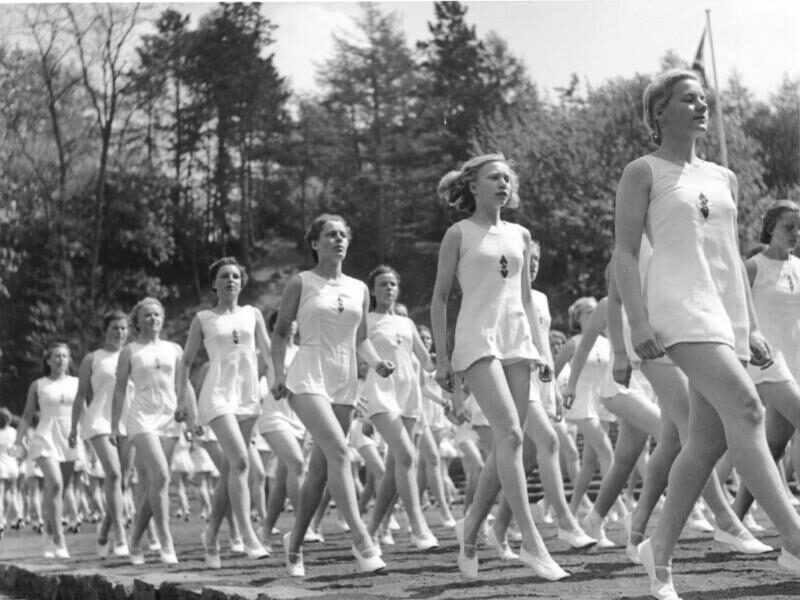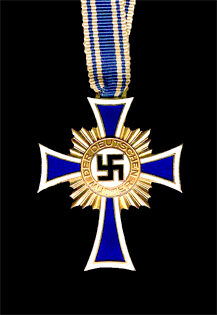During the Second World War the German government used propaganda to control the ‘vision of women’. With that said, what exactly was the role of women in the Third Reich? The role of women was instilled into them from a young age. The Nazi’s recognised the impact of indoctrinating the youth to instill the values they desired for the population; in particular the role and place of women in society. The youth movements were key to this, especially when they became compulsory in 1936. Just like the Scouts or Guides we have today, the youth movement was separated into different stages. Firstly you had The Jungel (Young Girls League) for girls aged 10 to 14. The next stage would be for girls aged 14 to 18 , which is widely recognised as the most famous of the girls youth movements and called the League of German Maidens (Bund Deutchser Madel). The movement has been a vision of the Nazi movement since the 1920’s but it was only when Hitler was named Chancellor that a newfinal stage for girls aged 17-21, the Faith and Beauty Society (Werk Glaube und Schonheit), was introduced in 1938. 
The key point about these groups is that they were aimed at turning women into good housekeepers and prepare them for their role as a wife and as mother. During the week there would be domestic training gearing the young girls to run a household and at the weekend (on a Saturday) there would be more physical and outdoor training which involved activities like swimming and long marches. The idea was to promote good health to make healthy mothers. During the war years the youth movements would collect donations in the form of money, clothes, food and visited hospitals at the front. Some of the older girls in the movement were able to volunteer as nurses.

For some girls, completion of the Youth movement could lead to university and a job. However you had to complete land service (landfrauenjahr) in order to do so. However, the sad truth is that women were being pushed out of workplaces. Women were being sacked out of jobs like Doctors, Teachers and Lawyers because this was not seen as their ‘sphere’. The Nazi’s believed that even though men and women had separate sphere’s of influence they complemented each other. Men’s sphere of influence was seen as working and the woman’s sphere was domestic. Historians usually sum this up as the three k’s, Kinder, Kuche, Kirche (Children, cooking and church.) The Nazi’s revived this from the time of Wilhelm II and is shown in a very famous rhyme for women in Nazi Germany:
‘Take hold of Kettle, broom and pan,
Then you will surely get your man,
Shop and Office Leave alone,
Your true life work lies at home,’
It wouldn’t surprise you to hear that the state gave incentives to women for being mothers, and to have large families. In 1933 a new law was introduced to reward newlyweds a loan of 1000 marks. The newlywed would be allowed to keep 250 marks for every child they had. The most famous example has to be the Cross of honor for German Mothers, introduced in 1938. The recipients would usually receive the medals on the day of their mother’s birthday. As with any traditional medal, there was a rank. You received a bronze if you had 4 or 5 children, you got a silver for 6 or 7 children, while a gold was for women who had 8 or more children. These were all importance incentives in boosting the population! And to top it all off, but only if you fitted the exact criteria, you could join the local lebensborn programme and have a child with an SS officer – lucky you! 
The Nazi state wanted women to dress simply and it was ideal to make your own clothes. Trousers were seen as unfeminine and women were encouraged to keep to skirts and dresses, as evident by the uniform of the youth movement and propaganda images at the time. Women were encouraged to have their hair long and styled in plaits or traditional Germanic/Nordic styles, especially if they were Aryan or blonde. Buns are often seen in the images and dying your hair was seriously discouraged! So to sum things up, the Nazi’s paid particular attention to instilling the role of women into the psyche of their population. Women were to be wives and mothers, and were encouraged to stay away from the workplace. The incentives of monetary rewards were a clever yet binding repression for women during this time.







